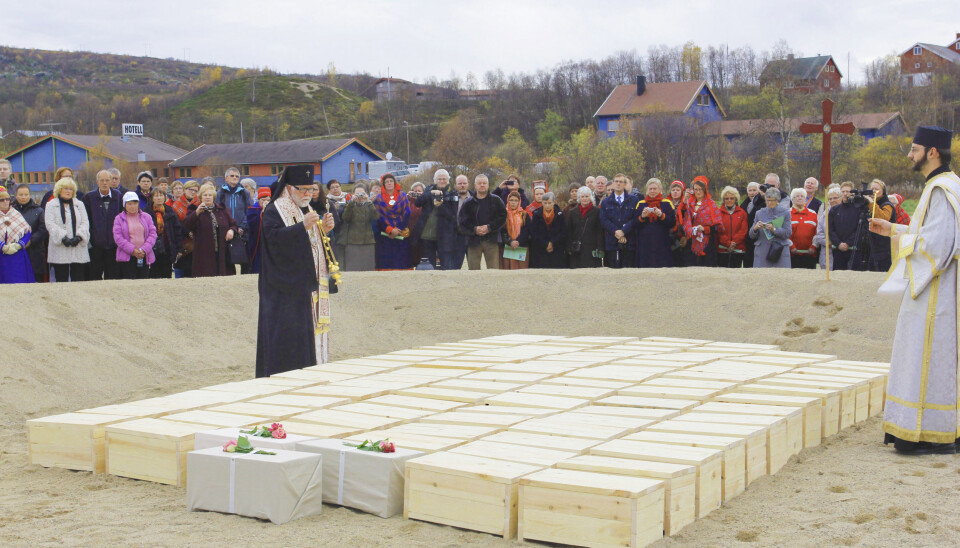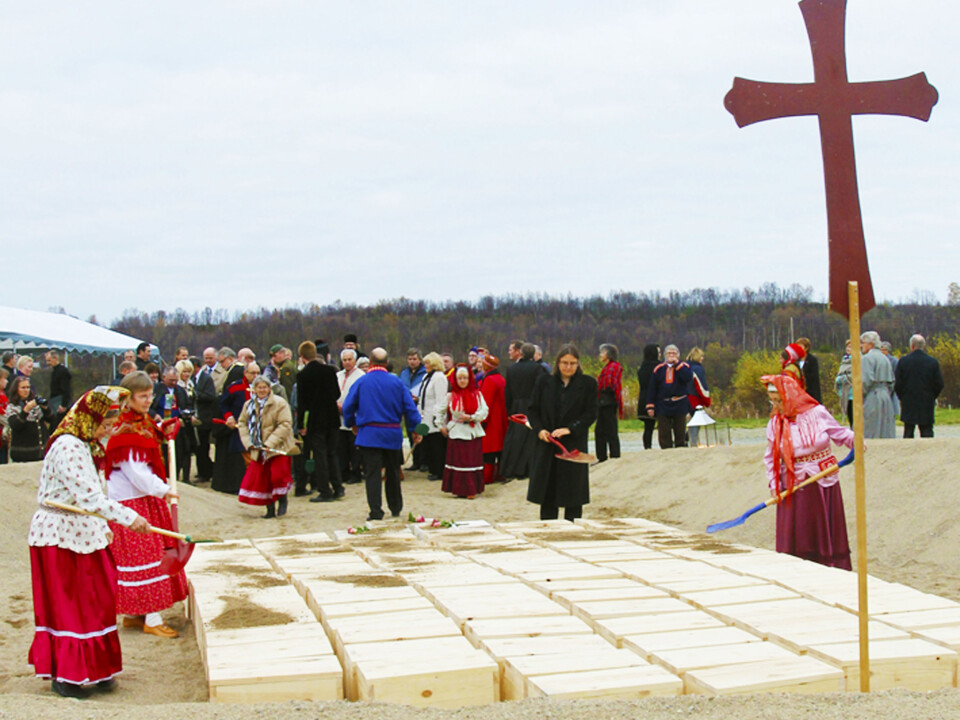An article from University of Tromsø – The Arctic University of Norway

Controversy over mass graves in the North
In 1915, ninety-four Sami skeletons were dug up in a town in northern Norway and sent to Oslo. The decision to repatriate and rebury the skeletons has been controversial.
Denne artikkelen er over ti år gammel og kan inneholde utdatert informasjon.
Johan Brun, dentist to the royal family, undertook the excavations on behalf of Professor Kristian Emil Schreiner, of the Anatomical Institute in Oslo.
In a letter from Brun to Schreiner, the dentist (and doctor) says that he first asked local people about digging up "the oldest graves around the Church, while of course I would not touch the newer graves." He was met with resistance and wrote that "an old blind Skolt woman" cursed him roundly in "Sami and Norwegian-Finnish". She was a contact person i Neiden, a small northern town, for the Russian Orthodox pope and Russia.
But he also met Aandre Jacobowitsj, another Skolt Sami, who said that there were skeletons on his property, just a bit beyond the cemetery. Jacobowitsj asked for five Norwegian kroner (less than 1 Euro) per skeleton. The deal was struck.
Excommunicated
The local Orthodox Church excommunicated Brun because of the excavations. More recently the church has been responsible for efforts to rebury the 94 Skolt Sami skeletons, which since 1915 have been kept in the Schreinerske collections at the University of Oslo.

In 2008, after a long struggle, the university decided to return the remains.
"The remains have significant value, both from an anthropological and cultural perspective, but because of the ethical aspects, I have been very clear that we should return them," said Gunnar Nicolaysen, head of the department at the University of Oslo, to a newspaper i 2008.
Additional research on the skeletons could have given information about living conditions, nutrition, health and diseases among the Skolt Sami.
Archaeologists can even figure out how people were clothed by looking at discoloration on the skeletons, even though there is no actual clothing left.
Unknown identities
But now it's too late. The reburial of the 94 skeletons took place on the last Sunday in September 2011, in spite of protests from a number of Skolt Sami.
The Orthodox Church in Neiden is convinced that the Sami were Christians, and thus had to be buried in consecrated ground.
Archaeologist Asgeir Svestad is not so sure. He has examined material from the graveyard and finds clear indications that some of the skeletons were buried in pre-Christian times.
According to Nicolaysen, who was responsible for returning the remains, DNA analyses and carbon-14 dating showed that some of the oldest remains were from 650 years ago. That would mean the remains had been buried before the Sami became Christians in the 16th century.
The cemetery was also not known at the time of excavation by other than the Skolt Sami who lived in the area.
The identities of the 94 persons are not known. And according to Svestad it is unclear who belonged to the Christian and pre-Christian religion.
Brun dug up not only skeletal material, but also objects. But the items were not reburied, and this in Svestad’s view is an ethical problem. Rings, jewellery and clothing cannot be separated from an individual when they are a part of that person's personality, identity and ethnicity.
Respect for forefathers
The 94 skeletons were reburied in a mass grave. This, too, Svestad believes is ethically problematic, given that this type of burial practice has never existed among the Skolt Sami.
"To rebury someone in a mass grave about whom we know nothing, is a paradox in my view and cannot be any more than a symbolic and political effort,” he says.
He points out that whether this action is worthwhile or not, is a matter for discussion.
His opinion is that the majority of the Skolt Sami in Neiden support research on the skeletons, and not rapid re-burial.
Svestad has proposed that the remains should be kept in the Eastern Sami Museum in Neiden.






























